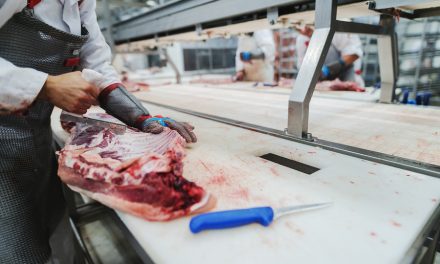Biochemist Valter Longo is a tenured professor at USC (he also runs the IFOM cancer institute in Milan) who has spent decades studying aging in yeast cells and lab mice. And his studies have convinced him that periodic fasting is the way to live a long and healthy life. Armed with this info, he’s developed a diet he believes may “boost longevity by mimicking the effect of” periodic fasting. So, he’s packed precise quantities of kale chips, quinoa soup, hibiscus tea, and other custom concoctions into mail order boxes that sell for $300 a pop. 1 His diet is meant to melt away belly fat, rejuvenate worn-out cells, prevent diseases (from diabetes to cancer) and turn back the clock on aging.
The “ProLon diet” (which stands for “pro-longevity”) “reflects a growing interest in episodic fasting, which has been touted by celebrities such as Jimmy Kimmel and Benedict Cumberbatch and in best-selling books like ‘The Alternate-Day Diet.’ His approach stands out because he insists he can use certain combinations of nutrients to trick the body into thinking it’s fasting without actually being on a punishing, water-only diet.” 2 Wouldn’t that be nice?
And Longo believes he knows why: fasting gives cells a break to rest, renew, rebuild themselves and “take out the trash” as the body shifts from storing fat to burning it. (Cells can’t do that when the body is constantly ingesting food, stockpiling excess calories, and pushing cells and organs to exhaustion.) But, just because something is true for mice in a lab doesn’t mean it translates to the more complex biology in humans. (My better half swears by intermittent or periodic fasting and small, short-term human studies show it reduces weight, abdominal fat, cholesterol, and blood glucose, as well as proteins like C-reactive protein and IGF-1 that are linked to inflammatory diseases and cancer.)
Some experts say there just isn’t enough clinical data to prove the diet does everything Longo claims but still other scientists, who fully understand the limitations of the data, are sold.
Satchidananda Panda, a researcher at the Salk Institute for Biological Studies in La Jolla, Calif.:
- Compared mice that were allowed to eat whenever they wanted to mice that only had access to food during a 10- to 12-hour period each day. The mice that fasted intermittently had no gray fur and weren’t lethargic, even as they neared 2 years of age, the average mouse life span. (Panda and his family have adopted the practice since seeing the results.)4
Mark Mattson, who runs the neuroscience lab at the National Institute on Aging, agrees, saying, “We’re not meant to eat three meals a day — and snacks. The animal data is very striking. These aren’t trivial effects on health.”
- Mattson eats all of his roughly 1,800 calories per day in a six-hour window in the late afternoon and early evening. He hasn’t eaten breakfast in 40 years. 5

At UCLA, pursuing a Ph.D. with Dr. Roy Walford (THE doctor who pushed the idea that severely restricting caloric intake would extend life), Longo grew disenchanted with the extreme regimen Walford preached. He decided to look to biochemistry and transferred to a genetics lab focused on yeast, figuring that would let him study the mechanisms of aging in the simplest of organisms. It would take him a year but he was eventually able to find a genetic pathway to describe aging in yeast and show that proteins and sugars could speed aging.
Excited, he wrote a paper that was sent back. He rewrote the paper and resubmitted. Dismissed again. He couldn’t get any of his work published without taking out each reference to aging. The discovery he thought was most important, the aging pathway, got insults from reviewers. They thought his research was crazy.
But, years passed and other groups started publishing work detailing, just like Longo had, specific aging pathways. Thankfully, his paper was published in 2001 and has since been cited HUNDREDS of times. In fact, it’s now the basis of work in many labs.
“Once he had the aging pathway worked out, Longo went on to look more deeply at what restricting calories did to yeast cells. He found withholding food ‘completely reprogrammed’ the yeast — cells lived longer and were resistant to threat after threat. ‘You could throw in any toxin you could think of and it wouldn’t die,’ he said.
So he started experimenting with limiting rodents’ intake of the proteins and sugars that he’d seen activate the aging pathways. (His lab cooks up a diet by hand for the animals; it’s also the inspiration for the the five-day diet he sells for humans.) His team has found that the diet shows promise in restoring pancreatic cells that keep diabetes in check, boosting immune cells, and helping prevent the deterioration of myelin, which plays a role in multiple sclerosis.” note]Stat News, June 13, 2017.[/note]
When on the ProLon diet, you’re allowed 1,100 calories the first day and 800 for the next four. (Make sure to do so under a doctor’s supervision but not if you have certain health conditions like diabetes.) It’s low in protein and fat and is delicious, something he made sure of by working with his longtime friend Ambra Ditonno, who runs a popular Italian cafe in Hollywood.
Longo wanted something that tasted great but had almost no calories. So, with his friend they worked together “after hours in Ditonno’s panini shop concocting extremely low-calorie soups — some just 30 to 45 calories per serving — out of pumpkin, beets, tomatoes, and broth.” 6 (The diet also includes ingredients like algal oil supplements, specific proteins, and things like flaxseed, inulin, glycerol, and cider vinegar; items he believes act to improve health or trick the body into thinking it is fasting.)
After cooking so many fasting soups, Ditonno decided to try the diet herself and not only lost some stubborn baby weight but eased several digestive issues. She’s a total convert. Once you see it work, how can you not be?
The idea of a professor marketing his own longevity diet has raised eyebrows, as has the cost. But, Longo, who created L-Nutra to market the diet and retains majority ownership, will funnel any profits into a nonprofit to fund research. At this point, not much money is coming in, though about 5,000 people have used ProLon. One day he hopes to receive FDA approval to market the diet as a tool to help prevent diabetes.
What do you think? Would you try this diet for $300? HAVE you tried it?












